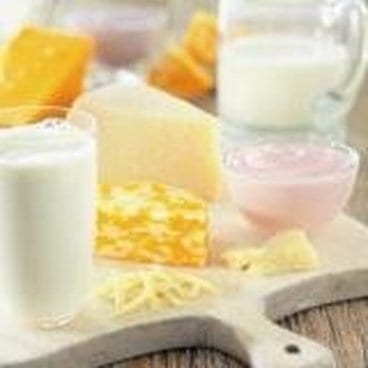Recently I attended a forum on New Directions in Lactose Intolerance: Moving from Science to Solutions. I was joined by more than 160 health and nutrition professionals from across the country – including physicians, dietitians and educators. We heard from seven lactose intolerance experts on scientific and consumer research highlighting the importance of: proper diagnosis, including dairy in the diets of all people to help meet key nutrient recommendations and reduce the risk of certain chronic diseases, managing lactose intolerance with realistic approaches tailored to the individual which acknowledge psychological impacts, as well as key considerations for children and their parents.
Recently I attended a forum on New Directions in Lactose Intolerance: Moving from Science to Solutions. I was joined by more than 160 health and nutrition professionals from across the country – including physicians, dietitians and educators. We heard from seven lactose intolerance experts on scientific and consumer research highlighting the importance of: proper diagnosis, including dairy in the diets of all people to help meet key nutrient recommendations and reduce the risk of certain chronic diseases, managing lactose intolerance with realistic approaches tailored to the individual which acknowledge psychological impacts, as well as key considerations for children and their parents.
Interesting…
The most interesting piece of information I learned is the majority of people with lactose malabsorption do not have clinical lactose intolerance and many who think they are lactose intolerant are not lactose malabsorbers.
Avoid Dairy?
We also heard that low-fat and fat-free milk, cheese and yogurt are often avoided because of concerns about lactose intolerance. Eliminating dairy foods may not only be unnecessary to manage lactose intolerance, but it also may lead to nutrient shortcomings which may result in adverse health effects. This is the conclusion of an expert panel convened by the National Institutes of Health earlier this year. Enjoy dairy again with these tips:
Try It
Try lactose-free milk and milk products. They are real milk products, just without the lactose, and provide the same great nutrients as regular dairy products.
Sip It
Start with a small amount of milk daily and increase slowly over several days or weeks to tolerance.
Stir It
Mix milk with other foods, such as smoothies, soups or sauces – or pair it with meals. This helps give your body more time to digest it.
Slice It
Top sandwiches or crackers with natural cheeses such as Cheddar, Colby, Monterey Jack, mozzarella and Swiss. These cheeses are low in lactose.
Shred It
Shred your favorite natural cheese onto soups, pastas and salads. It’s an easy way to incorporate a serving of dairy that is low in lactose.
Spoon It
Enjoy easy-to-digest yogurt. The live and active cultures in yogurt help to digest lactose.
About Guest Expert Carolyn Hudson
Hi! I am Carolyn Hudson, a registered and licensed dietitian (RD, LD). All fancy words for letting you know that I am licensed to help you make sense of dairy nutrition. My job at Midwest Dairy Council is being the dairy nutrition expert skilled at boiling down dairy science to make it understandable. I love being a dietitian and have worked for more than 30 years in the United States and Canada. I am very active in my profession and currently president elect of the Minnesota Dietetic Association. I also sit on the Corporate Advisory Council, Minnesota Academy of Family Physicians and the University of Minnesota Dietetic Internship Advisory Council.
Info
- Read more about Lactose Intolerance






